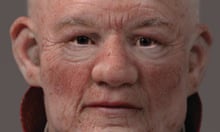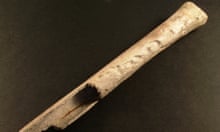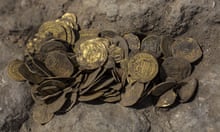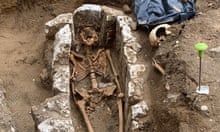One day, perhaps a little over 7,000 years ago, a man in his 30s and a younger companion dipped their fingers in ochre pigment and set about daubing the walls of a shallow cave in southern Spain with anthropomorphic, circular and geometric designs.
Today, thanks to the fingerprints they left behind in the natural shelter of Los Machos in the province of Granada, researchers have been able to determine their sexes and ages.
The study, carried out by experts from the University of Granada, Durham University and the Autonomous University of Barcelona, has established that the pictures were painted by a 36-year-old man and, most probably, by a woman a little less than half that age.
Their findings, published in the journal Antiquity, suggest for the first time that both men and women took part in making rock art, and that it was a social, rather than an individual, act.
Francisco Martínez Sevilla, a researcher at the University of Granada, said that while experts had long known about the 32 neolithic images painted on the slopes of the Cerro de Jabalcón some time between 5,500BC and 2,500 BC, the figures had only recently begun to yield some of their many secrets.
“We looked at the number of fingerprint ridges and the distance between them and compared them with fingerprints from the present day,” he told the Guardian.
“Those ridges vary according to age and sex but settle by adulthood, and you can distinguish between those of men and women. You can also tell the age of the person from the ridges.”
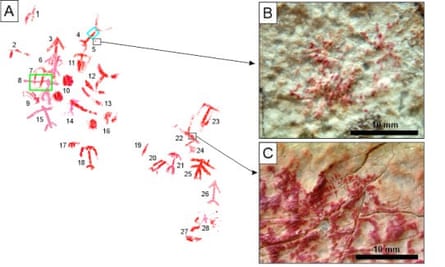
While some of the fingers that painted the pictures belonged to a man aged at least 36, Martínez Sevilla and his colleagues cannot say for certain who his fellow artist was. There is a high likelihood that they were a woman aged under 20, or perhaps a juvenile male.
“We don’t know if they were members of the same community,” he added.
“From our point of view, if there are two people taking part in the creation of this pictorial panel, it means it must have been a social, rather than an individual, act, as we’d thought until now. It shows us that these manifestations of art were a social thing and not just done by one individual in the community, such as the shaman or whoever.”
Although Martínez Sevilla acknowledges that he and his colleagues will never know the relationship between the pair – nor the significance of the images they left behind – the enduring art speaks for itself.
“The area where they are, and the fact that they haven’t been changed or painted over, gives you the feeling that this was a very important place and must have had a really important symbolic value for this community,” he said.
As an archaeologist, added Martínez Sevilla, he tends to see the person behind the stone or the tool rather than just the object itself.
“And when I look at these pictures, there’s a bit of an emotional response because I see a person, many thousands of years ago, painting symbols or designs that would have meant something to them, or which would have been a way for them to express themselves, or identify the territory, or communicate socially.”




